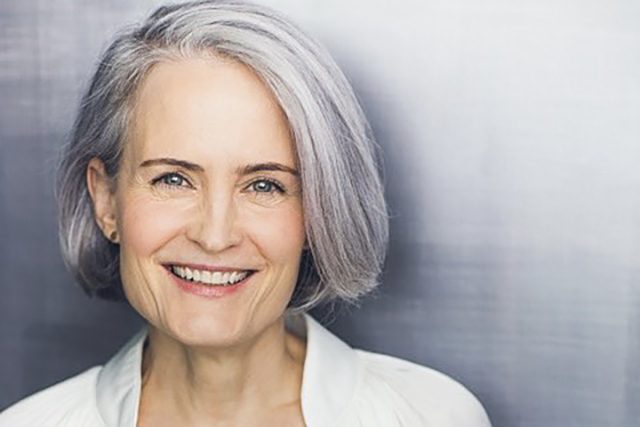Alumnus Miranda Massie GRD ’91 speaks at Peabody Essex Museum climate change webinar
The Climate Museum curator joined panelists at the Peabody Essex Museum’s climate change webinar last Thursday to discuss her climate goals.

Courtesy of Miranda Massie
Founding director of The Climate Museum Miranda Massie, GRD ’91, called for increasing climate awareness through art and community-building during the Peabody Essex Museum’s climate change webinar on Feb 9.
The event, titled “Speaking from the Heart: An Open Dialogue on Climate Action” brought together artists, curators and researchers in a virtual roundtable discussion that centered on the climate crisis and the importance of collective human action. Massie was joined by Harvard student-poet Jordan Sanchez, Washington County Community College student-artist Noela Altvatea, Bates College student-activist Natalia Jacobs and Kevin Green, behavioral scientist at the Rare Center for Behavior and the Environment.
Massie spoke about the mission of The Climate Museum during her talk. Founded in New York City in 2016, The Climate Museum is the first museum in the United States that addresses the issues of a warming climate through exhibits, pop-up events and shared spaces where its visitors can consider their own connections to the planet.
“One of the things that matters the very most is encouraging people who are concerned about the climate crisis [and] haven’t yet leaned into taking civic action to understand themselves as true climate protagonists,” Massie said.
Her museum has hosted activists, thinkers, and writers such as Olúfẹ́mi Taiwo, a philosopher who recently visited to speak about climate reparations.
All of The Climate Museum’s exhibits have aimed to spotlight artworks by artists focused on climate change. Past work has dealt with themes such as polar ice loss, fossil fuel disinformation and the search for home in the wake of climate displacement. One of its current exhibits features a sprawling postcard mural by artist David Opdyke that depicts a “dystopian potential future” full of organic wit, humor and beauty.
Thursday’s webinar was part of the Peabody Essex Museum’s recent exhibit, “Climate Change: Inspiring Change”, which showcases works from 29 youth artists across New England in collaboration with Massie’s The Climate Museum.
Throughout the discussion, speakers grappled with feelings of helplessness in the face of political and economic gridlock.
Green, whose social research deals with human behavior, explained that the imperceptible, gradual destruction of climate change can often prevent individuals from ever deciding to act. Many of these ideas are in turn reinforced by collective behavior. He noted that the climate crisis was an instance of “pluralistic ignorance” in which individuals mistakenly underestimate levels of support for climate action in their communities.
Massie similarly observed that there was a supermajority in the US for transformational climate action, except that popular social perception minimized the actual support for change “at [a] scale by half.” Mobilizing more collective support, she added, begins with everyday conversations that cultivate awareness and new connections.
However, speakers at the webinar suggested reasons for optimism. Modeling, Green explained, has shown that one of the strongest predictors of solar panel installation on house roofs — more than age, education or political bias — was the presence of panels on neighboring roofs. In other words, what matters is the climate-friendly behavior of those around you.
“We don’t have to look away from the hard truth. In fact, it’s really important to see that truth clearly and to name it,” Massie added. “In doing that together […] we build a sense of community that’s profoundly enriching and meaningful.”
The speakers all agreed that art was central to the project. Altvater, Sanchez and Jacobs reflected on their work as student artists, poets, and performers, and explained how art could express a shared hope for a greener world.
Sanchez recalled the wonder she felt the first time she attended The Climate Museum’s “Climate Speaks” youth art program, while Altvater shared the spiritual significance of water to her tribe. Jacobs spoke about treasured childhood memories of snow days and her wish to protect them for generations to come.
“Being a poet, I feel my unique responsibility is to remind people […] that caring about the world, caring about climate change, really is just caring about people,” said Sanchez at the talk.
For Massie, this belief in art’s social potential has been at the heart of her project all along. In her final remarks, she recognized the power and humanity in the act of artistic creation and advocated for its continued role in promoting change.
“To be human is to relate to art, and to be human together is what we need to confront the climate crisis,” said Massie. “Change is possible, necessary and lies ahead.”
Despite popular reception in the community, Massie admits that running a non-profit museum faces its fair share of challenges. She acknowledged that only 2 percent of global philanthropy goes towards environmental issues, with an even smaller fraction dedicated to “cultural and arts focused work.” The museum has continued to grow, but financial pressure remains.
“Every 6 to 8 months, we are counting days of operational runway,” Massie wrote in an email to the News. “It is a condition of continual uncertainty that does not match the remarkably positive response we receive from the visiting public.”
Nonetheless, Massie is hopeful: she plans for the museum’s next exhibit to explore the relationships between climate change and inequality, issues that “co-created each other.” She hopes that The Climate Museum will continue to bring art, learning opportunities and civic action to set visitors on a journey of “climate agency.”
The Climate Museum is located on 120C Wooster St. in New York City.







